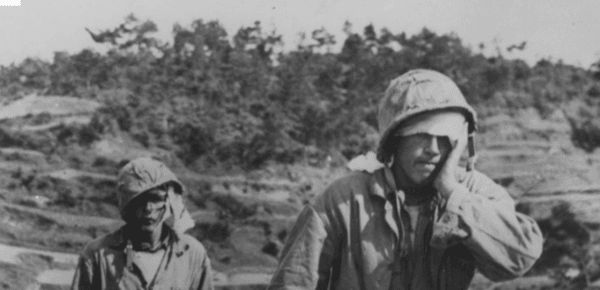In the midst of the Battle at Okinawa during World War II in April 1945, George Chrisman was shot and had to rip the bullet out of his wrist with his own teeth. While on the Hometown Heroes radio show on KNZR News Talk 1560 AM in 2016, the 88-year-old veteran told the story of just how he did it.
At the 82-day long Battle of Okinawa, more than 100,000 Japanese soldiers and civilians died and roughly 10,000 American soldiers were killed and 40,000 were wounded. The Battle of Okinawa was the largest amphibious assault in the Pacific theater during World War II.

(Audioburst/YouTube)
Chrisman said that when he was shot in the hand amid combat on Okinawa, he knew he had been hit because it felt like hot burning coals. He saw the blood and knew there was nothing he could do but yank the bullet out with his teeth. He said it burned his lips.
Chrisman said, “You do what you have to do.”
The interviewer couldn’t help but chuckle, which he apologized for, but said that Chrisman was so nonchalant about his actions that day, when in fact, it was remarkable that he pulled a firey hot bullet out of his wrist with his teeth.
Take a listen to his story in the video below:
Chrisman said they had all been trained as first-line medics since there were no doctors on the battlefield. So in the event of shrapnel or a bullet wound, in most cases, they could be fairly easily tended to with not much more than a small incision. The same is true with a broken bone, he said, just tape it up.
He added that most guys didn’t care much about being wounded; they felt it was their job to fight and they just wanted to go on and continue to battle.

(Audioburst/YouTube)
The interviewer asked Chrisman if he ever thought about saving the bullet that he’d just spit out after he removed it.
He said no — all he thought about was saving his life. About what the wound looked like after the bullet was gone, Chrisman said, “It was sore and bloody, but you push it back together as much as you can and put some formaldehyde on it and throw a band-aid on it.”
Reaching into one’s skin and pulling out a hot bullet by the teeth has to be an unforgettable memory, but it also signifies just how determined and committed these soldiers were — and still are — to completing their assigned missions.



